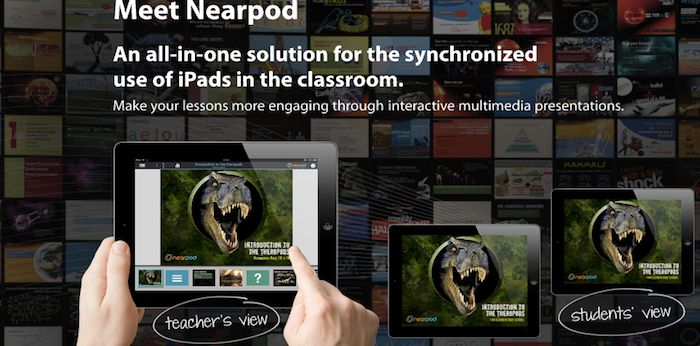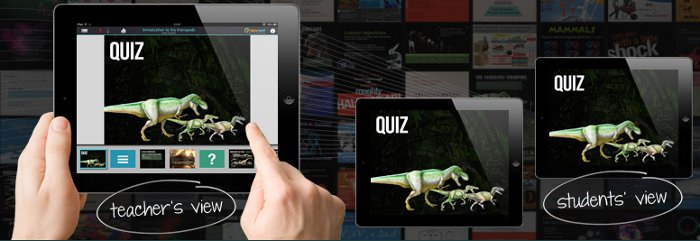A Miami-based educational startup says its flagship app — a teaching suite that syncs students’ and teachers’ iPads to share interactive lessons and quizzes — could be the missing puzzle piece to making mobile technology easy and effective in the classroom.
Nearpod co-founder Guido Kovalskys acknowledges that there are lingering concerns over the efficacy of high-tech teaching tools — especially compared to fundamental assets like engaged, responsive and well-informed teachers — and that there are a lot of fingers in the educational tech pie. But he has faith, he said, in the app’s basic premise.
“From an engagement perspective, I can already tell you what teachers are telling us unanimously,” he said. “Kids love using iPads running Nearpod and their engagement levels have gone up significantly.”
Kovalskys also simply believes the project has hit on a good idea. The app lets an instructor’s iPad control a fleet of devices in the hands of students, which can be used to synchronize interactive slides during a lecture, keep track of curricular activity, and gauge student progress with quizzes and tests.
During a year of private beta, the team tweaked the platform in response to critiques by students and teachers. It also evaluated expectations around the software before rolling it out for the trial phase, and followed up with questionnaires on how the platform had been used. It is also working to collect data on averages before and after classrooms start using the technology.
“The uniqueness of the platform resides on the easy and instant synchronization of devices,” Kovalskys said. “Nearpod focuses on offering a synchronized and collaborative experience that allows the teacher to manage the overall pace of the class.”
Apple is actively fostering a relationship with teachers and the educational development community around the iPad, largely through digital textbooks and for controlling content displayed on a television or projector screen.
Kovalskys credits Miami for an affordable talent pool and area schools that have been receptive to field tests of the software. At the same time, the team is open to the possibility of relocating to the Bay Area as the venture picks up steam.
The project is currently raising funds with the help of Salesforce.com’s Clarence So.
Image: Nearpod










